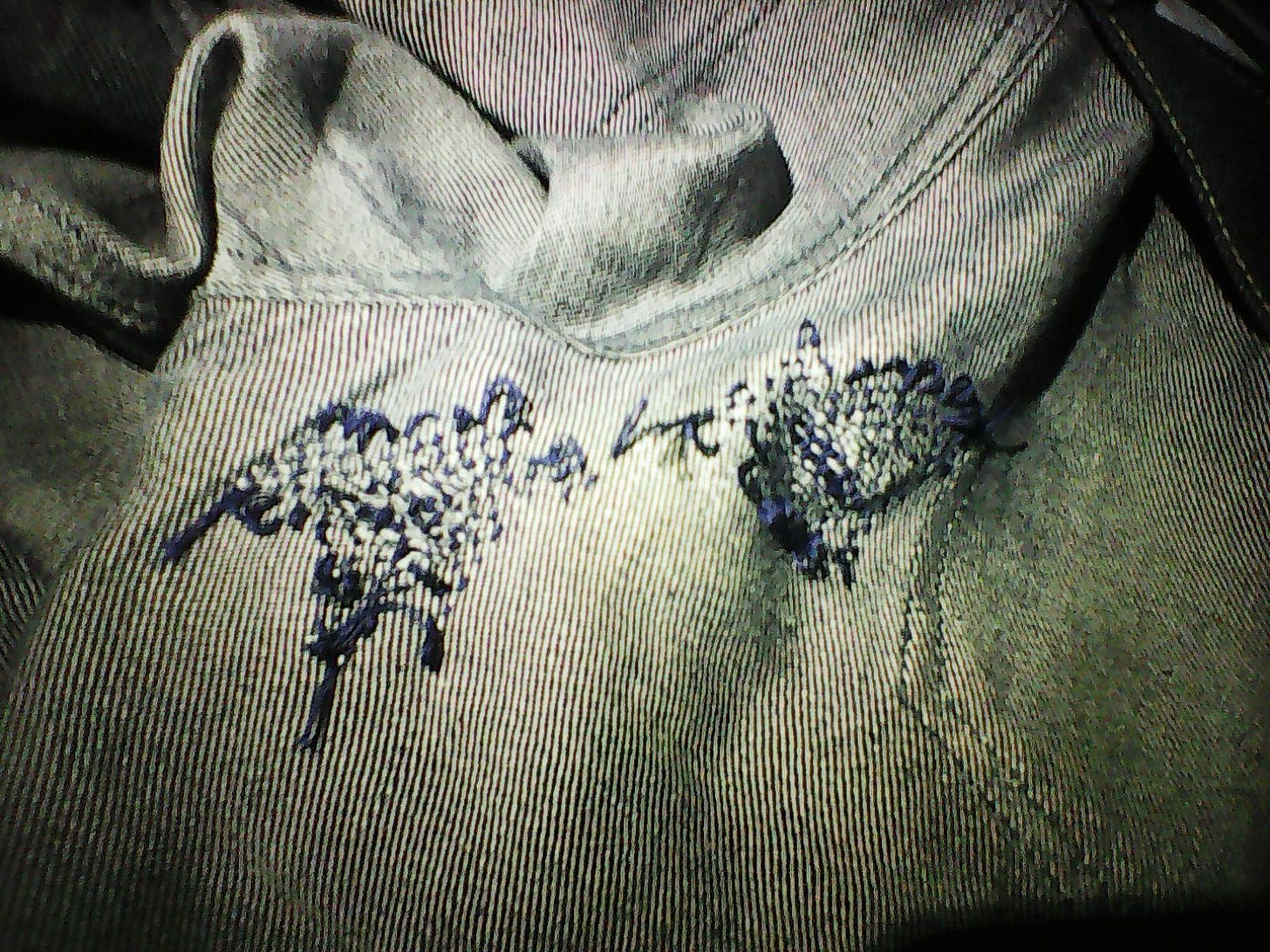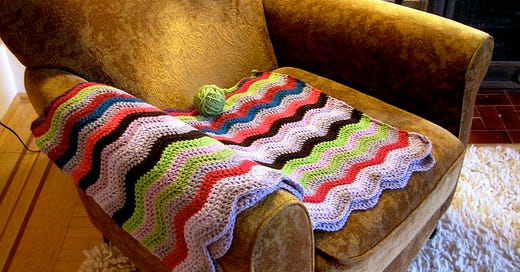
Over her lifetime, if my maternal grandmother was sitting down, she was either knitting or crocheting something. We grandchildren all got warm pairs of slippers and for a few years, we granddaughters got ponchos, but later in life, it was primarily afghans.
Before she died, she made a different one for each of her children and grandchildren (15 afghans not counting great grandchildren). I know she made many more, giving them away for new babies and wedding presents. Each was as different as the person receiving it.
My mother’s was in a zig zag type pattern in oranges and yellows. By the time I inherited it, it was already somewhat threadbare, and when I had my first child it already had holes where the yarn was coming apart. Several years ago, probably as a part of some purging during a move, I got rid of it. I think about it now, and actually feel kind of sick.
In 2025, it seems like as a people we are starting to see the waste and harm in endless consumerism. People are starting to focus on buying less and repairing what they do have. As I’ve grown older I also know the work that goes into something handmade as well as how treasured something passed down can be. As a result, when it comes to my own afghan, which at this point has also developed holes, I tucked it for safe keeping into my cedar chest. I had no idea how to repair it, but was hoping I would eventually find someone who could.
Recently I was attracted to a post by a fellow substacker about darning. I followed that to some online videos about how to darn. Then I took the afghan my grandmother made for me out of the cedar chest it’s been in for almost a decade and decided that I would repair it.

The afghan she made for me is an off white color. It has both crochet and knitted panels, and has strips that alternate patterns across its width. Decades of having it as a blanket on my bed had eventually worn holes in a couple of places and without knowing how to repair it, I tucked it away for protection.
One of the best parts of current “darning” theory include using obvious colors so that instead of the repairs disappearing, the stitches stand out as a mark of taking pride in our repairs. With that in mind, I chose a rich brown color, found a darning needle and started work.
My first attempt is messy. What should have been more of a weaving, at the end it was all just a big nest of yarn going back and forth. However, it is as strong as the original stitching and is in no danger of pulling apart.
To be fair, it was a big hole to begin with and so that and having never darned before has me feeling less perfectionistic than usual. Once I finished, I felt inordinately proud of myself. I was worried about using a different color, but I’m so happy I did. Even a few weeks later, I still smile looking at it in its new place in our living room.
I couldn’t help but also think about my grandmother Elizabeth, who having grown up as a part of the “greatest” generation, would wonder why people ever stopped. While poor, they took great pride in having new things because they would have saved up for them. Keeping things looking new was the goal. I wondered what she would say about my messy little weaving.
Have you repaired an heirloom? Are you darning your clothing to keep it instead of buying new? If so do you like it to show? Let me know in the comments!




